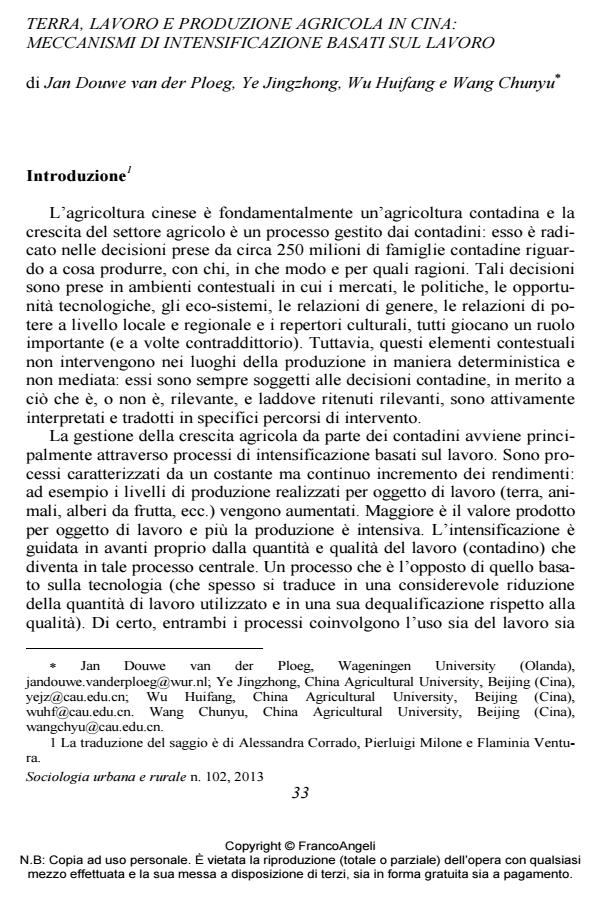Land, Labour and Agricultural Production in China: Mechanisms of Labour-Driven Intensification
Journal title SOCIOLOGIA URBANA E RURALE
Author/s van der Ploeg Jan Douwe, Ye Jingzhong, Wu Huifang, Wang Chunyu
Publishing Year 2013 Issue 2013/102
Language Italian Pages 18 P. 33-50 File size 246 KB
DOI 10.3280/SUR2013-102003
DOI is like a bar code for intellectual property: to have more infomation
click here
Below, you can see the article first page
If you want to buy this article in PDF format, you can do it, following the instructions to buy download credits

FrancoAngeli is member of Publishers International Linking Association, Inc (PILA), a not-for-profit association which run the CrossRef service enabling links to and from online scholarly content.
Chinese agriculture is basically a peasant agriculture and agricultural growth is a peasant managed process. Peasant managed agricultural growth mainly occurs through labourdriven intensification. In this text the authors discuss several mechanisms that play a role in, and together explain, the remarkable recent growth of China’s agriculture. Empirical data were gathered in two mountain villages of Hebei province, where the multiple involvement in different activities is actively used to strengthen the peasant unit of production.
Keywords: Labour-driven Intensification, Peasant Agriculture, China’s Agriculture, Multifunctionality, Rural Nonfarm Economy, Rural Migrations.
van der Ploeg Jan Douwe, Ye Jingzhong, Wu Huifang, Wang Chunyu, Terra, lavoro e produzione agricola in Cina: meccanismi di intensificazione basati sul lavoro in "SOCIOLOGIA URBANA E RURALE" 102/2013, pp 33-50, DOI: 10.3280/SUR2013-102003